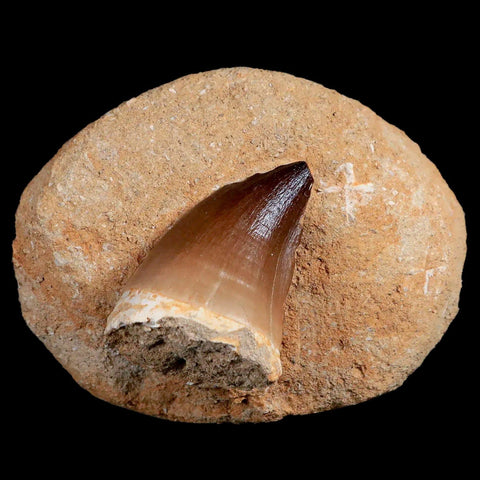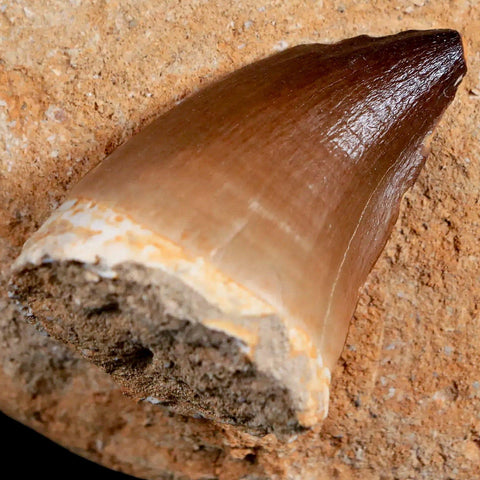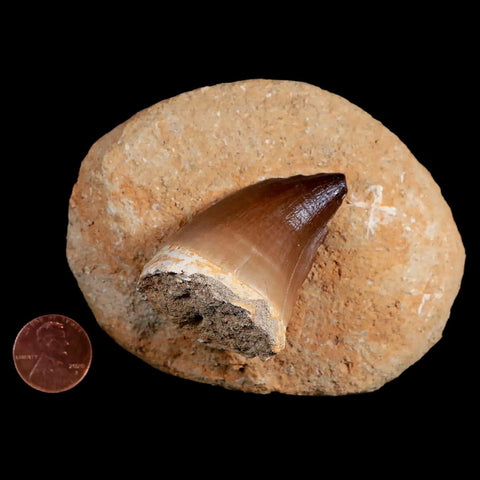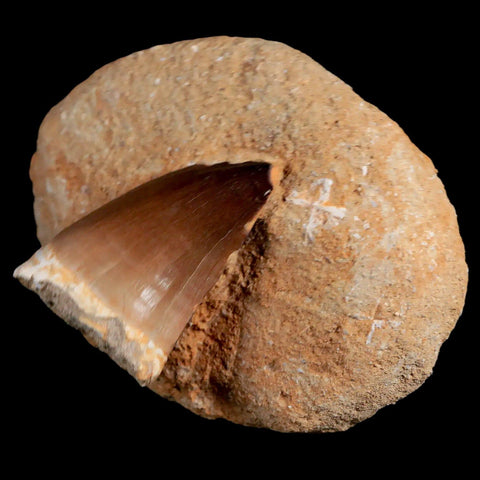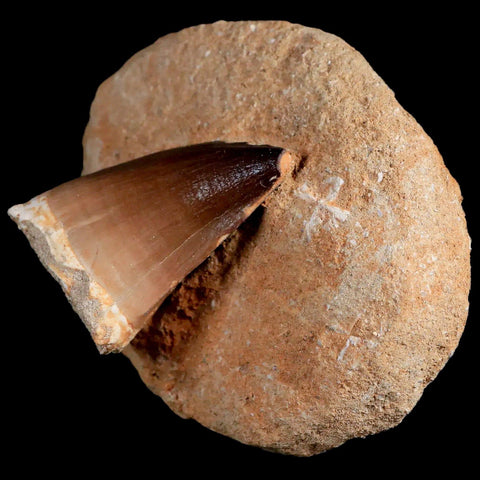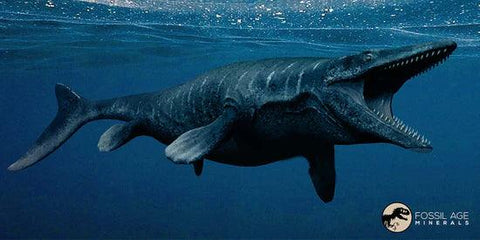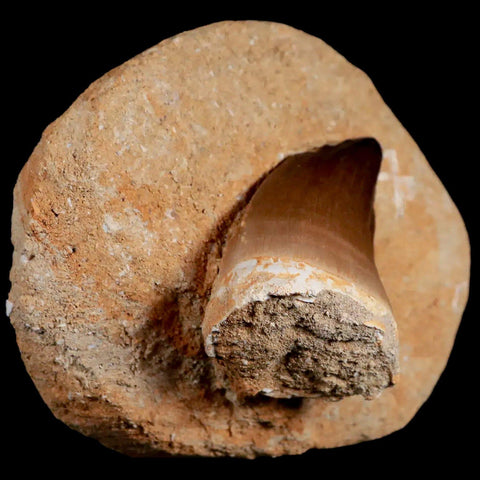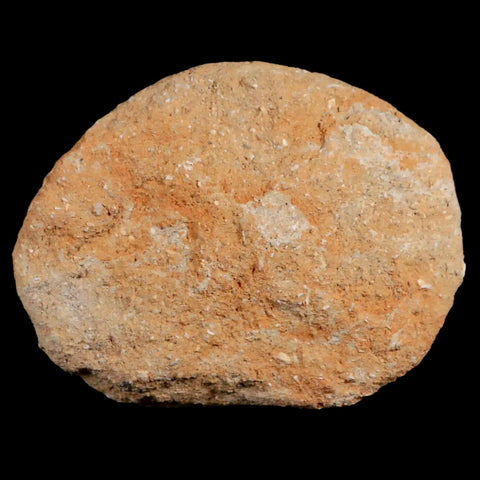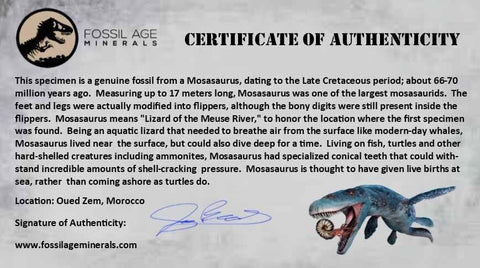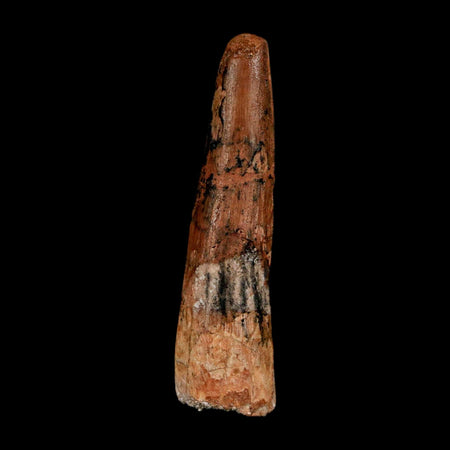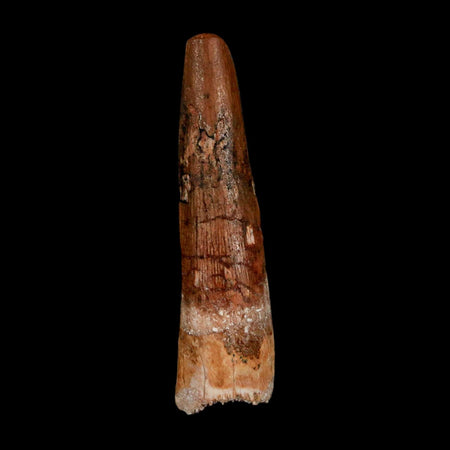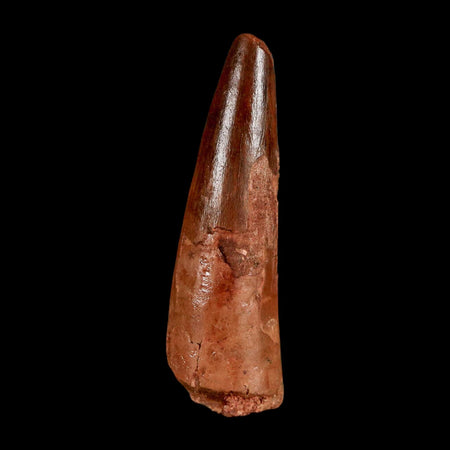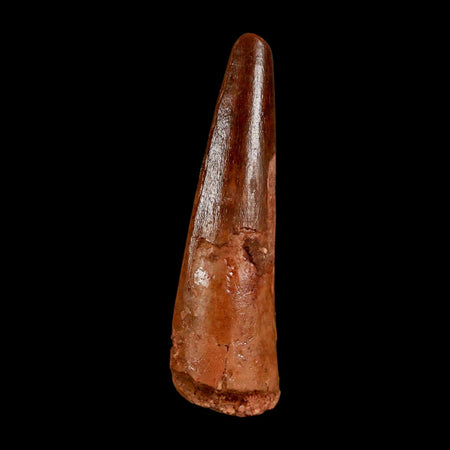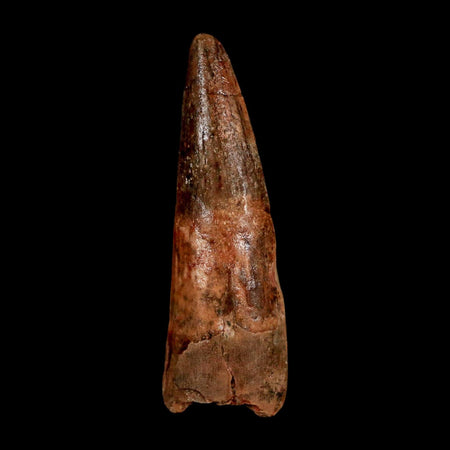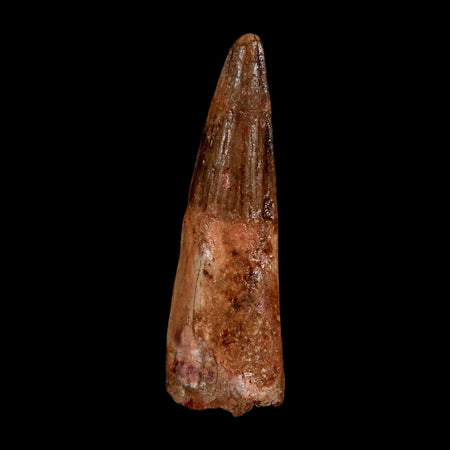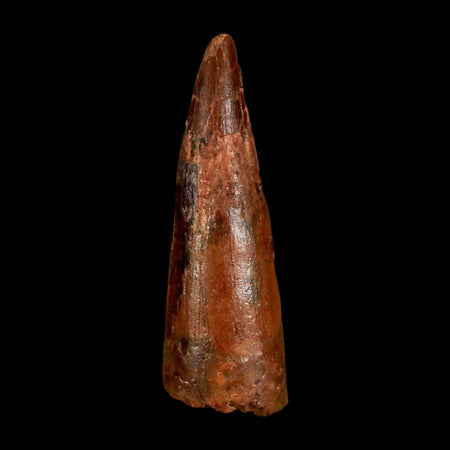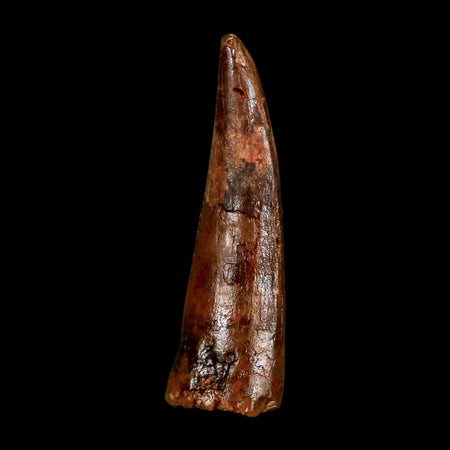1.9" Mosasaur Prognathodon Fossil Tooth In Matrix Cretaceous Dinosaur Era COA
Location: Oued Zem, Morroco
Weight: 7.6 Ounces
Dimensions: 3.8 Inches Long, 2.9 Inches Wide, 2 Inches Thick (Matrix)
Tooth: 1.9 Inches Long, 1.4 Inches Wide
Comes with a Certificate of Authenticity.
The item pictured is the one you will receive.
This is a genuine fossil.
100 - 66 Million Years old, Upper Cretaceous, Maastrichtian Epoch.
Name: Prognathodon (Forejaw tooth).
Named By: Dollo - 1889.
Diet: Carnivore.
Size: Depending upon the species, Prognathodon could range between 6 to possibly just under 14 meters in length.
Known locations: Fossil locations suggest a worldwide distribution, but especially well-known from Europe and North America.
Time period: Campanian to Maastrichtian of the Cretaceous.
Prognathodon, a late Mosasaur, adapted its hunting style in a way similar to the much older basal placodont reptiles of the Triassic, like Placodus. This remarkable predator specialized in consuming tough-shelled creatures such as shellfish, ammonites, and turtles. For years, its diet was only theorized based on its teeth and jaw structure, but groundbreaking Canadian discoveries in the early 2000s unveiled both its full body form and actual diet. One fossil even contained turtle and ammonite remains in its stomach area, along with a large 160 cm fish, proving that while Prognathodon was a targeted hunter, it was also flexible and opportunistic in what it ate. This fossil tooth offers a fascinating glimpse into the life of such a unique predator.
Prognathodon had a robust and heavy jaw that would have been capable of withstanding a high bite force supplied by powerful jaw muscles. However, it’s the teeth that should receive special note, as not only are they strong and well-adapted for crushing, but have serrations that can be seen under much more detailed inspection. This makes the teeth specialized for a dual purpose, destroying the protective shells of prey while shearing the flesh within. Another specialization is the presence of bony rings around the eye sockets. This is seen as a deep-water adaptation for the eyes to better withstand the higher water pressure of deep water, something which may have often been necessary when diving for ammonites.
Why Prognathodon shifted towards this kind of diet when mosasaurs are generally perceived to be apex predators of other reptiles and fish remains uncertain. It could have been that competition for the ecological niche of apex predators was so fierce that the only way Prognathodon could evolve and survive was by adapting to a different food source, removing the need for competition with other predators. It could also be that the number of large prey animals that mosasaurs are traditionally associated with began to fall, necessitating a need to switch to a different diet. It could have been to simply exploit an abundant food supply. What is certain is that Prognathodon was not the only mosasaur to adjust to this diet, with another named Globidens also having particularly large and rounded crushing teeth in its mouth.

Please be aware of the nature of fossils:
Being buried under the ground for millions of years under tons of pressure tends to be rough. No fossil comes out of the ground whole and perfect. Most fossils have undergone some restoration, while others are altered by man simply to enhance their presentation in different ways. The workers in Morocco do a very professional job of unearthing and preserving these natural treasures; however, commonly, natural cracks are visible on the surface. These are part of the natural beauty of the fossil and are not considered defects.


